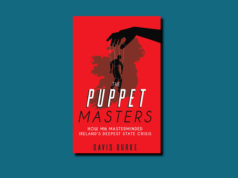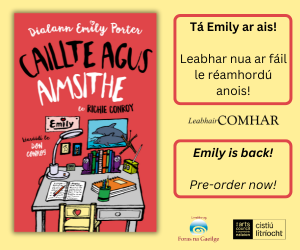
Sweeney, an Intertonguing|Rody Gorman|Francis Boutle Publishers
Sweeney, an Intertonguing by Rody Gorman—Linguistic delights that will keep your head spinning
by Cathal Póirtéir
Rody Gorman is a Dublin born writer who has lived for many years on the largely Gaelic speaking Isle of Skye. Over the past twenty years or so he has published several poetry collections in English, Irish, and Scottish Gaelic and regularly shares individual poems on social media. His most recent work is the massive Sweeney, an Intertonguing, an attractively produced hardback running to almost four hundred pages.
A note on the dust jacket explains to readers that the term ‘intertonguing’ comes from the Scottish Gaelic ‘eadar-theangachadh’ meaning ‘translation’
The Sweeney in question is the seventh century Suibhne Geilt or Mad Sweeney, a mythological character from medieval Irish literature, perhaps better known now because of more modern treatments and translations in books by notable Irish writers including Seamus Heaney‘s Sweeney Astray, Flan O’Brien‘s At Swim Two-Birds and Neil Gaiman‘s American Gods.

A summary of the story might run like this: Suibhne Mac Colmáin is a king in north-east Ulster who is cursed by Saint Ronán to wander and fly around Ireland after Sweeney attacked him and threw his psaltar into a lake (later returned by an otter). Suibhne is involved in the bloodshed of the Battle of Moira, is turned into a bird and driven mad by the violence he has taken part in and witnessed. More misfortunes befall him, and he spends the remainder of his life wandering naked around Ireland, living in the hills and forests, before eventually being murdered by a spear, as predicted by the Saint Ronán who he had attacked with a spear at the beginning of the tale.
This is a multi-lingual project relating the story of Mad Sweeney in prose and poetry, in Irish, Scottish Gaelic, standard English and in an imaginative version of English that readers of Rody’s work will recognise immediately as his own brainchild
Whether you’ve read the story of Suibhne in modern Irish or English (or not at all), Rody Gorman’s Sweeney, an Intertonguing will hold linguistic delights for you that will leave your head spinning. This is a multi-lingual project relating the story of Mad Sweeney in prose and poetry, in Irish, Scottish Gaelic, standard English and in an imaginative version of English that readers of Rody’s work will recognise immediately as his own brainchild.
A note on the dust jacket explains to readers that the term ‘intertonguing’ comes from the Scottish Gaelic ‘eadar-theangachadh’ meaning ‘translation’ and refers to a translation where the synonyms, homonyms, and associations of a word in the original Gaelic are combined into a composite word in English. So now you know.
There’s no denying that this was a challenging read for me but there were great rewards for persevering and doing my best to follow Rody Gorman’s linguistic gymnastics and reimaginings of the ancient tale. The main problem for the average reader is that what you have read in one of the languages here will, for the most part, be echoed in the others. A cover to cover reading does afford the reader the opportunity to appreciate exactly what the poet is at in this project but it is undeniably repetitive in a narrative sense while remaining a linguistic tour de force.
The linguistic innovations in this work are not the only fresh creations based on the ancient text
There is another possibility for readers that just wish to follow the narrative and that is to follow a single language’s telling from start to finish, skipping over the other versions and coming back to them later—but that stepping-stones approach might defeat much of the poet’s purpose I suspect, and undermine the full impact and intent.
The linguistic innovations in this work are not the only fresh creations based on the ancient text. The poet allows himself further licence in extending the venerable narrative to allow it to encompass some more modern historical events and themes in Irish and Northern Irish history.
There is no doubt that Sweeney, an Intertonguing is a unique achievement in modern poetry. Few writers have the linguistic and cultural background and linguistic ability to imagine such a project, never mind bring it to fruition. It must have been a daunting and almost obsessional task for Rody Gorman to put so much time and energy into this tome—hopefully he will find many readers of Irish, Scots Gaelic, and English willing to engage with it and discover its wonders.

Cathal Póirtéir has specialised in researching, presenting and commissioning Irish interest material in various radio formats and in books, including history, literature and folklore in Irish and English, as well as current affairs and drama.











